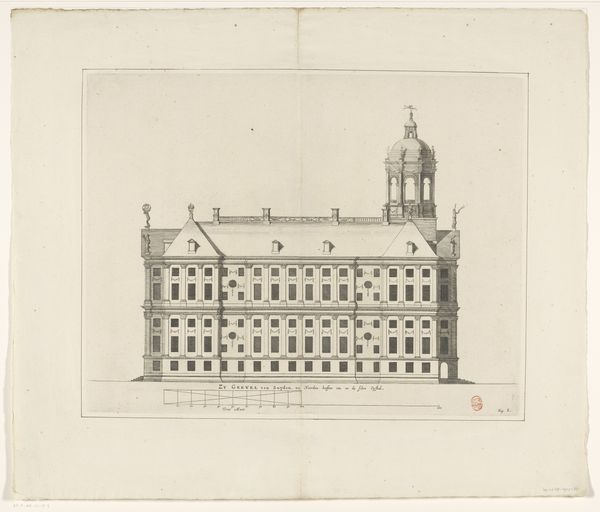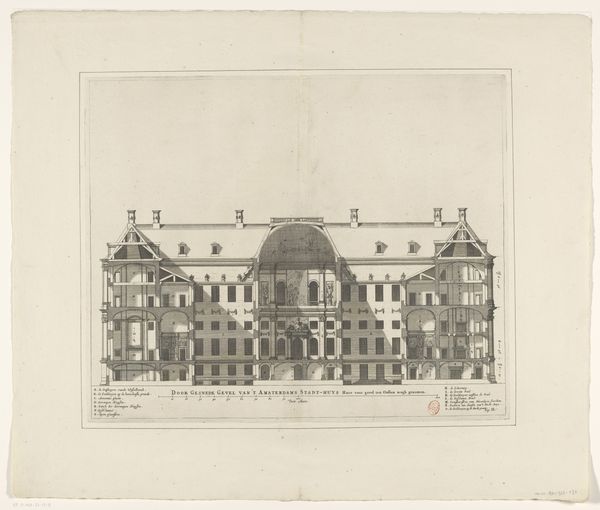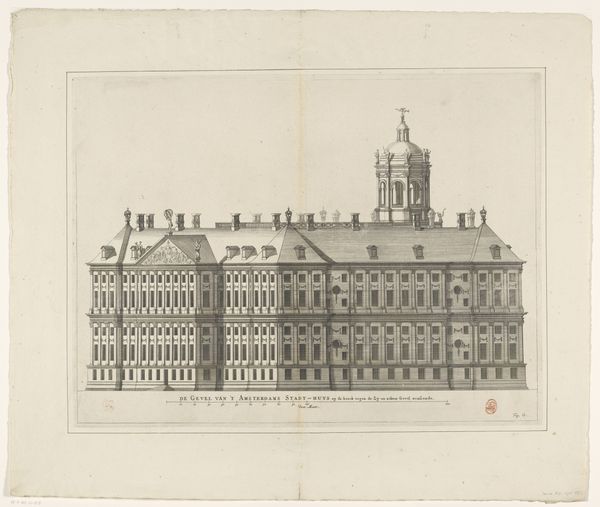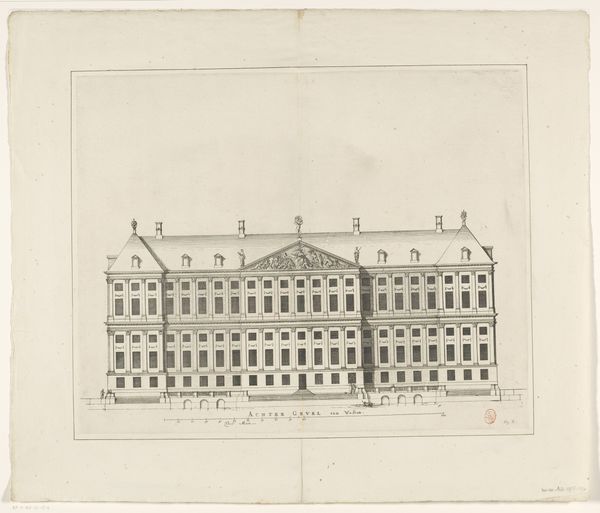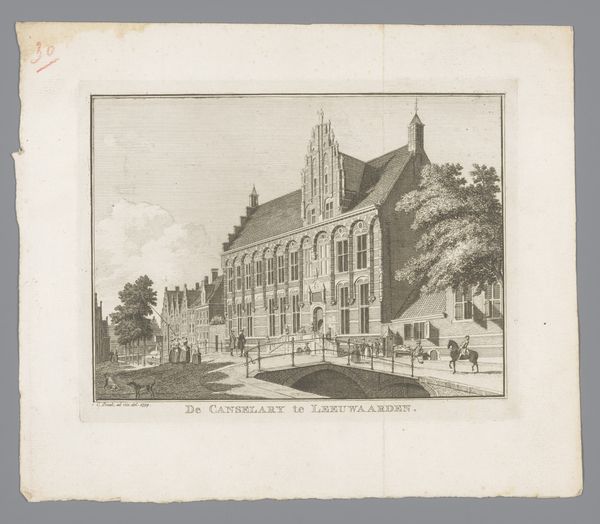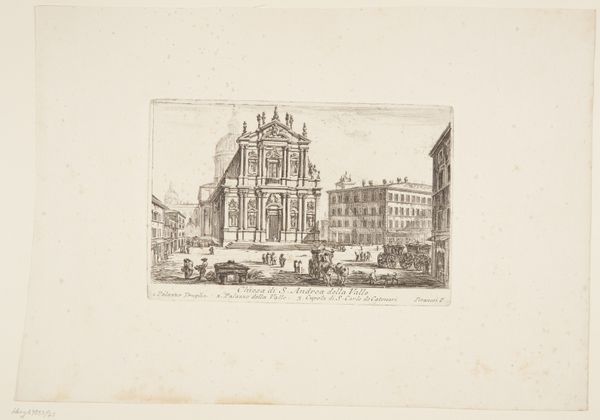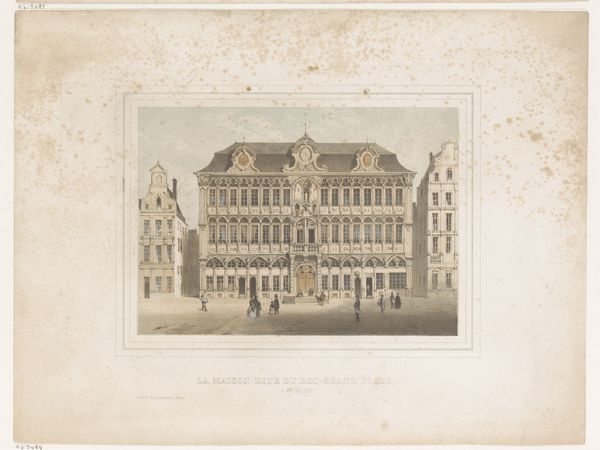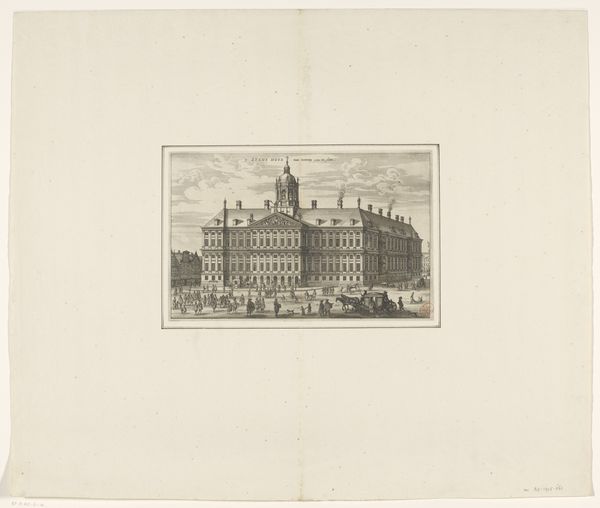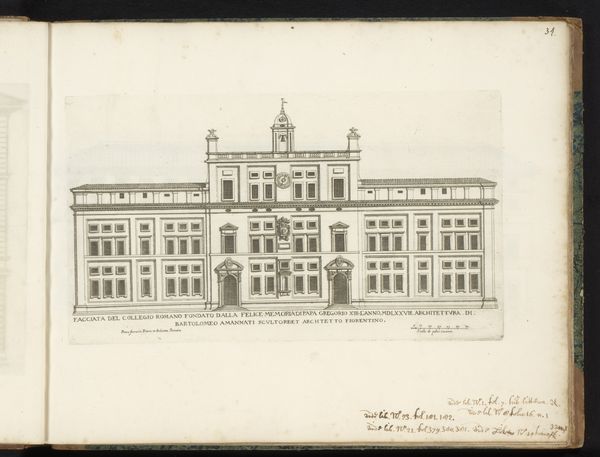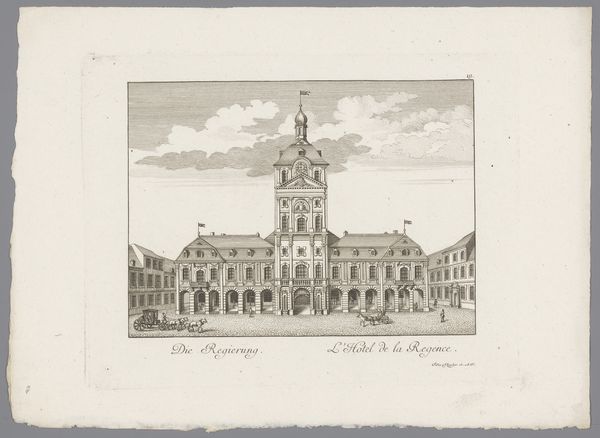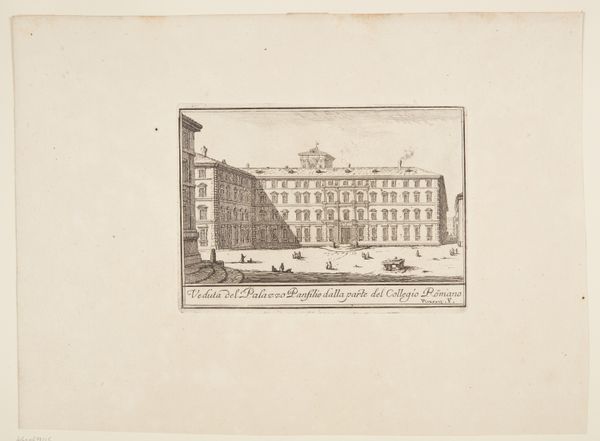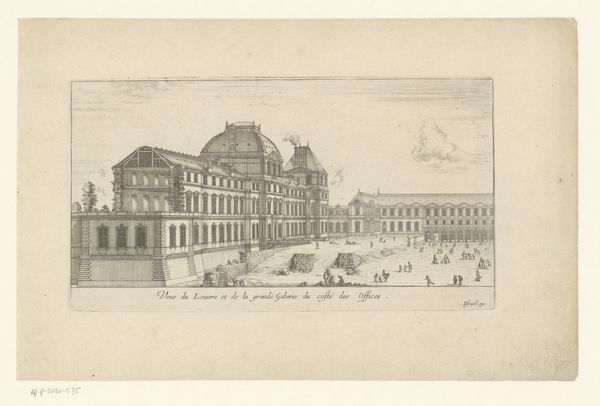
print, etching, architecture
#
dutch-golden-age
# print
#
etching
#
etching
#
line
#
cityscape
#
architecture
Dimensions: height 398 mm, width 491 mm
Copyright: Rijks Museum: Open Domain
Curator: This is "Doorsnede van het Stadhuis op de Dam, door de breedte," an etching made in 1661 by Dancker Danckerts, currently held in the Rijksmuseum. It depicts a cross-section of Amsterdam's city hall. Editor: My first impression is of stark precision. The rendering is so detailed it feels almost surgical. But the building's exposed interior feels more like a stage set than a real, bustling space. Curator: Precisely. Look closely at how the line work creates a sense of both depth and flattening. Consider, too, how such detailed architectural drawings served as powerful tools of statecraft. The city hall symbolized Amsterdam’s mercantile power, and distributing such images disseminated that message widely. Editor: The material of the etching itself plays a key role. The affordability of prints allowed these architectural plans, these representations of power, to circulate broadly. How does the actual use of the building—its daily life, labor, and inhabitants—intersect with its symbolic representation in the print? Curator: That is crucial. This image emerged from a Dutch society deeply stratified by class, religion, and gender. Examining its context helps reveal those nuances, prompting us to consider who had access to this symbolic representation of power, and who was excluded. Whose labor made such grandeur possible, and who benefitted most? Editor: And let’s not forget the labour embedded in the production of the print itself! The artist, the workshop, the circulation—all tied to systems of resource extraction, trade, and potentially exploitation, that made the flourishing of Dutch art and architecture possible. This precise print hints at the material networks on which it depended. Curator: Right, by situating this print within its historical and socio-political contexts, we can understand it as both an aesthetic object and a potent agent in shaping perceptions of power and belonging in the Dutch Golden Age. Editor: Absolutely. This image of solidity actually opens up a wide investigation into the complex material conditions and social dynamics that underpinned 17th-century Amsterdam.
Comments
No comments
Be the first to comment and join the conversation on the ultimate creative platform.
